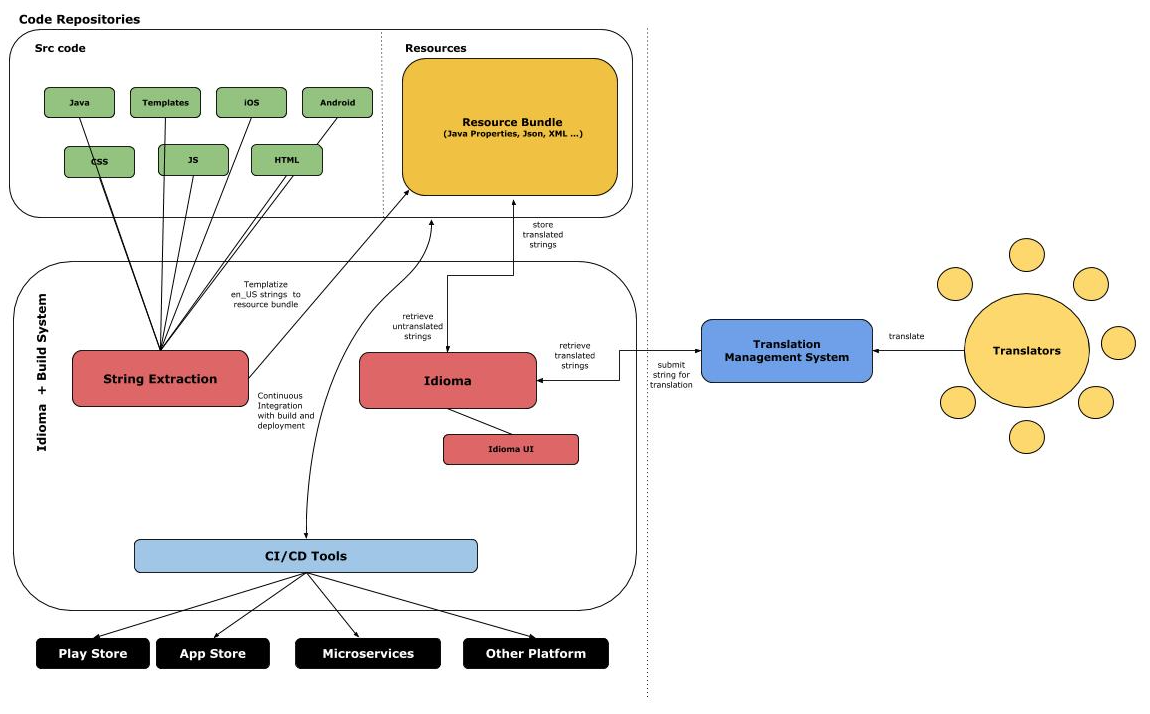Continuos Localization - changing people's mindsets - Best practices and benefits!
Last Tuesday was a holiday here and I was catching up on boring and bureaucratic personal stuff that I love to procrastinate (go to the bank, get a medical check, drive to the supermarket...)
But not everything was boring bureaucracy !!! 😅 I also took the opportunity to have a nice lunch with some friends, and later when my children left school we were playing tennis. To end the day we played video games for a while. One of the games that my son played caught my attention when he told me that "there were new things every day"
That comment unleashed my mind, "new things every day" = new content every day = new content Localized every day, bingo!😎
When I asked my son what he liked most about the game, he didn't mention the graphics or the different game modes or the music ... no, he didn't say any of that, the reason he liked the game he told me again is "Because there were new things every day"
That made me think how the landscape has changed not only for video games, but for software in general, and made me reflect on the "need" to have "new things every day"
If we go back about 20 years ago, software development and localization were very different from the current model. There was a concept called "language delta" and now when I think about it, it seems like a totally obsolete idea! First, the English version of a product was developed for months, sometimes even years ... and then, a few weeks later the localized versions were released.
That language delta approach today is totally unfeasible, and that is soemthing Dr. Noriaki Kano explained in his famous “Kano model” ( something that at the time seems extraordinary gradually becomes “normal”
That is the case of my son who already considers "normal" new content in a game every day.
And this approach is not something that applies only to video games since there are countless apps or web pages that launch new content every day, some, even several times a day, and in multiple languages!
Once explained from my perspective how we have reached the continuous delivery model ... the next aspect to be treated is how continuous localization is integrated into a continuous delivery framework.
But before I explain how we can integrate continuous localization in a software development framework there is something that I want to clarify before; Agile Localization and Continuous localization is not the same ... sometimes both terms are used interchangeably, but no, Agile Localization is not the same as Continuous Localization
In my post last week I wrote about Agile LOCALIZATION, this week I want to delve deeper into the differences between the two methodologies and the necessary steps to integrate Continuous Localization in the Software Development Process, and the benefits… do you think this is an interesting topic? Then go ahead! Keep reading
The concept of Agile has become popular in the last 6-7 years ... but the truth is that Agile development has its origins much earlier, during the 90s.
The popularity achieved has been more recent because Agile is a flexible and human-centric framework.
Gone are the days of the long development process, now we embrace the instant feedback and continuous improvement. And the truth is that Globalization teams fit very well in the new scenario we are living.
Why?
Globalization is a continuous on-going effort. The quality of the content on a frequent basis is the key to build customer engagement. Customer engagement changes from country to country. Therefore Globalization / Localization teams are crucial to close the gap between the product and the customized needs of our potential clients. Continuous Localization is no possible without continuous content production, continuous iterations, and continuous integration. This is the main reason why a Localization team plays a fundamental role in a continuous delivery cycle. And actually, before there is continuous delivery, continuous update of our app, or web page or whatever `piece of software we are producing ... before releasing new content, the content needs to be localized. For this reason, Globalization has a nice fit in the continuous delivery Agile framework.
Perhaps this is better understood with the infographic that I created below? Click/tap HERE to download it!!
The way I see Agile Localization/Continuous Localization the main difference is …
In Continuous Localization, the content is always ready for a release. In Agile Localization the content is not always ready to be released; we need to wait until the sprint is completed
We could say continuous delivery is a subset of the Agile approach. In continuous delivery, the product is ready for a release at any time during the development cycle.
Which are your thoughts when it comes to Continuous Localization? What challenges are you facing? Have you experienced other benefits or best practices than the one I summarised in the infographic? Leave your comments below and looking forward to knowing how continuous localization might have changed your life!
Have a great weekend!
@yolocalizo
















We all talk about the importance of localization metrics, but where do you actually get them?
This question hit me hard during a recent panel, and it made me realize something I had been overlooking.
If you’ve ever struggled to find the right data to prove localization’s value, this post is for you.